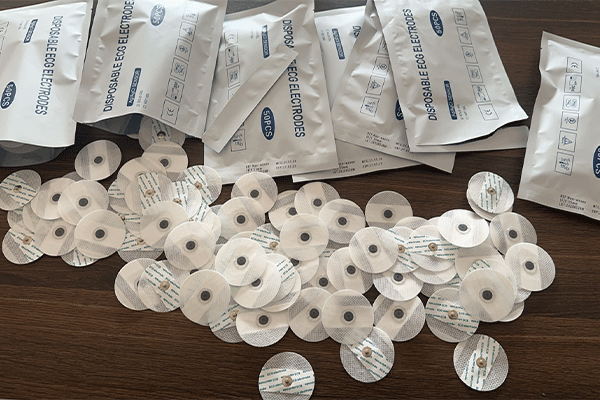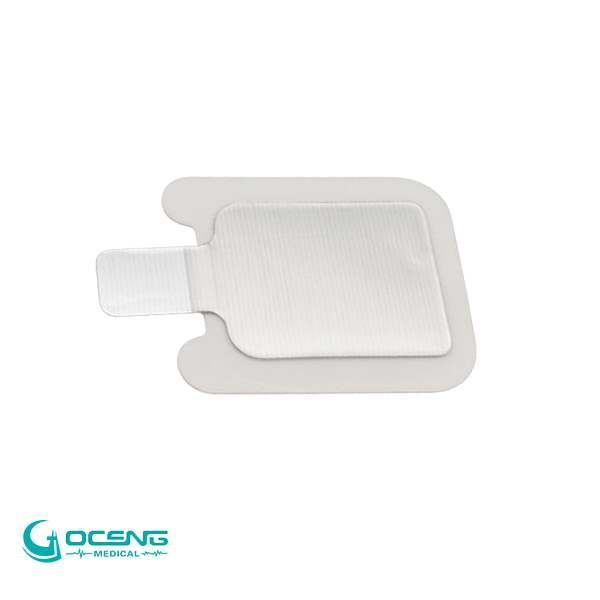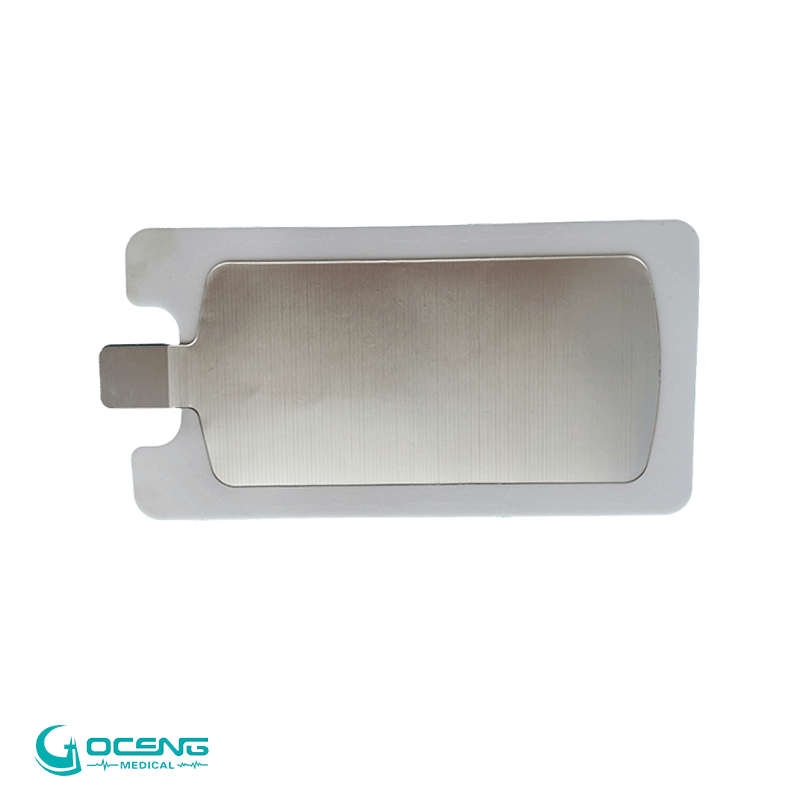Selecting high-quality electrocardiogram (ECG) electrode pad is crucial for ensuring the accuracy, stability and patient comfort of ECG monitoring .
1. Electrode Type
Wet gel electrode (most common)
Advantages: Good electrical conductivity, stable signal, suitable for long-term monitoring (such as Holter).
Disadvantages: The gel may dry out and is prone to peeling off after prolonged use.
Applicable scenarios: Hospital monitoring, ambulatory electrocardiogram.
Dry electrode (gel-free)
Advantages: No gel required, less likely to cause allergies, suitable for people with sensitive skin or long-term wearable devices.
Disadvantages: The signal may be relatively weak and there may be significant motion interference.
Applicable scenarios: Home smart bracelets, long-term wearing and monitoring.
Adhesive Type
Hydrocolloid electrode: Low allergenicity, suitable for sensitive skin (such as children and the elderly).
Acrylic adhesive: Strong adhesion, suitable for sports conditions (such as sports load tests).
2. Conductive material
Silver chloride (Ag/AgCl) Industry standard, excellent electrical conductivity, strong anti-interference ability, suitable for medical-grade ECG.
Carbon fiber or metal foil is mostly used for low-cost or short-term monitoring, but the signal stability is relatively poor.
3. Adhesive performance
Adhesive strength: Select based on the usage time (for example, 24-hour Holter requires high adhesion).
Breathability: For long-term application, breathable materials are required to reduce skin irritation (such as porous non-woven fabric substrates).
Residual glue: High-quality electrodes should have no glue residue after being removed to prevent skin damage.
4. Size and Shape
Standard size ( diameter 3-4cm) : Suitable for adult chest leads.
Small-sized electrodes: Suitable for children or limb leads.
Irregular designs: such as butterfly-shaped and square, which need to be matched according to the device interface.
5. Certification and Safety
Medical Certification: Prioritize products that have been certified by FDA, CE or NMPA (China).
Biocompatibility: Passed the ISO 10993 test to ensure non-toxicity and low allergenicity.
Sterilization method: Ethylene oxide (EO) sterilization is safer (avoiding electrodes containing latex).
6. Application scenario adaptation
Short-term monitoring (such as outpatient ECG) : Ordinary wet gel electrodes are sufficient.
Long-term monitoring (such as in the ICU) : Select high-viscosity and breathable electrodes (such as 3M red dot electrodes).
Sports or sweating environment: Waterproof electrodes (such as electrodes with polyurethane film).
7.Other precautions
Skin preparation: Clean the skin before use (wipe with alcohol), and shave if necessary.
Storage conditions: Store in a sealed container, avoiding high temperature or humidity that may cause the gel to fail.
Shelf life: Usually 2 to 3 years. The conductivity of the electrode decreases after expiration.
Goceng's suggestion : medical scenario: Give priority to Ag/AgCl wet gel electrodes + highly adhesive and breathable designs (such as 3M Red Dot). Home/long-term monitoring: Consider low-sensitization dry electrodes or hydrocolloid electrodes.
Sensitive skin: Choose electrodes free of latex and containing moisturizers (such as glycerin).






